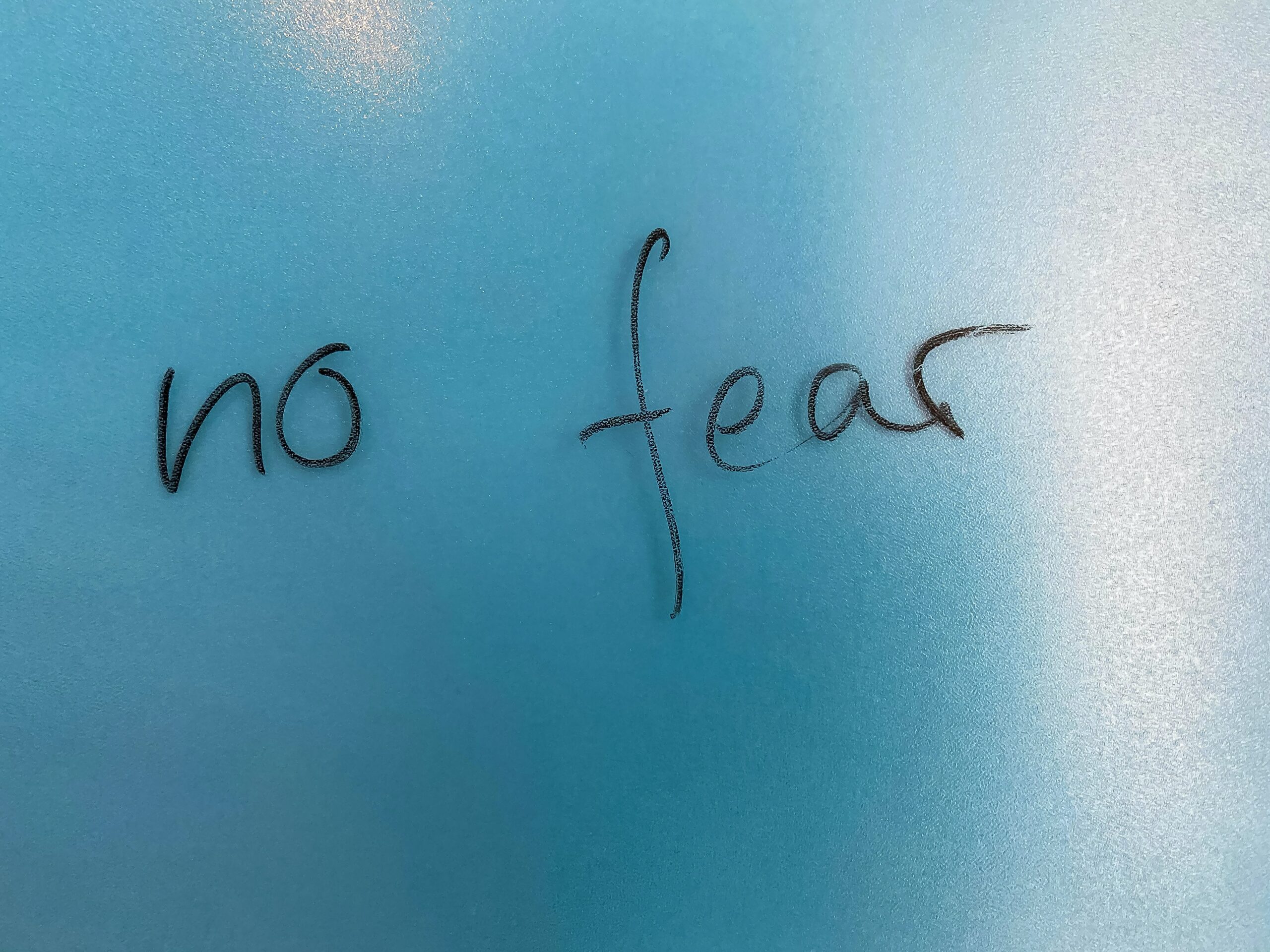The COVID-19 pandemic has shaken so many aspects of our lives. We are being forced to live our lives very differently right now and it makes sense that a lot of different intense emotions would come up. In this five-part series, I will discuss five of the most common ways I’ve seen COVID-19 shake people’s lives and the DBT skills that could be used to cope.
Part 2: Fear
Many of us are feeling a lot of fear right now: fear that we or loved ones might get sick, fear that we or loved ones might die from COVID-19, fear that we might spread COVID-19 to others, fear that we won’t be able to pay our bills, fear that we’ll lose our job, fear for our safety, and fear of the unknown. Although fear is natural and makes a lot of sense, it’s important to make sure that our fear fits the facts and doesn’t cause undue distress and dysfunction in our lives. The following DBT skills might  help to reign in fear and take effective action:
help to reign in fear and take effective action:
-
Observe and Describe
First, it’s important to observe and describe what you’re experiencing. Observing fear means to just notice what it feels like in your body. That dropping sensation in the pit of your stomach? That tension in your neck and shoulders? Those are probably fear! Notice that fear is here and then describe it. Put a name on it and call it what it is. “I am feeling fear. Fear has just enveloped me.” Research shows that we can start to manage our emotions just by labeling them. You can also practice Mindfulness of Current Emotions by allowing yourself to feel what you feel when you feel it, without pushing it away or trying to keep it around. Respect your emotion for what it’s trying to tell you or motivate you to do, and also check the facts.
-
Check the Facts
Now that we know that fear is here, the next step is to check the facts. Does fear fit the FACTS of the situation? If you have the DBT handouts and worksheets, take a look at the Check the Facts handout in the Emotion Regulation module. If not, you can practice checking the facts simply by asking yourself a series of questions:
1. Does my emotion (fear) fit the facts? Fear fits the facts when your life, health, or well-being or that of your loved ones is threatened; you’re in a situation where you’ve seen others threatened or hurt; or you’re in a new or unfamiliar situation, among other things.
 2. Does the intensity of fear fit the facts? Try to rate the intensity of your fear on a 0-100 scale, where 0 is the equivalent of being asleep and 100 is the most afraid you’ve ever been. Does that number fit the FACTS of the current situation and statistical risk?
2. Does the intensity of fear fit the facts? Try to rate the intensity of your fear on a 0-100 scale, where 0 is the equivalent of being asleep and 100 is the most afraid you’ve ever been. Does that number fit the FACTS of the current situation and statistical risk?3. Does the duration of fear fit the facts? Does how long you have been feeling this fear at this intensity fit the FACTS of the current situation? Does it make sense?
-
Opposite Action
Take stock of your answers to the above “check the facts” exercise. If the emotion, intensity, or duration DO NOT fit the facts, you may want to try opposite action to fear. You can practice opposite action to fear by figuring out what your current action urge is (the action urge usually associated with fear is avoidance/fleeing) and do the opposite of that. This is definitely not to say that you should go out in public and go rub up against as many people as possible without washing your hands! My guess is that even if your fear doesn’t completely fit the facts, SOME aspect of it is warranted; you want to respect that. So opposite action in this case might be throwing yourself into work, problem-solving, or whatever you need to do instead of throwing up your hands and giving up.
-
Problem Solving
If you’ve taken stock of your answers to the above “check the facts” exercise and determined that the emotion, intensity, or duration DO fit the facts, you’re going to want to do some problem solving. First, figure out what your goal is in this situation and what needs to happen for you to feel okay. Then, brainstorm as many solutions as you can think of and don’t limit your brainstorming. Then, choose the two solutions that are most likely to work, complete a pros and cons on those solutions, and take action on the one that seems like it will be most effective. If that doesn’t work, keep trying solutions.
-
Radical Acceptance
It can be really hard to accept reality as it is right now, and yet, it is necessary. Notice what feels unacceptable about this situation and act as if you accept it. For example, I need to radically accept that I might contract COVID-19. If I fully accept this and act as if I accept it, I’m going to do my best to stay home, practice social distancing but not emotional distancing (see Part 1), practice good hand hygiene, and wear a mask in public. Accepting reality doesn’t mean I just give up and stop trying to protect myself; it means I’m very active in problem-solving and protecting myself.

-
Crisis Survival Skills
If the intensity of your fear is very high (say, 70 or above on that 0-100 scale) and you’re unable to do what needs to be done, try crisis survival skills. You may need to use TIP (TIP the temperature by activating the dive reflex with cold water, intense exercise, and progressive muscle relaxation with paced breathing), distract, self-soothe, or IMPROVE the moment (imagery, meaning, prayer, relaxing actions, one thing in the moment, take a brief vacation from adulthood, encouragement). Once your emotional intensity decreases to a level where you can do what needs to be done, return to the other skills above.
Those are six ways to cope with fear during the COVID-19 pandemic. Fear is very real these days and much of it is justified. However, it’s important that we don’t let fear control us or immobilize us ineffectively during this time. Notice what the fear is telling you, check the facts, and use skills to take effective action.
Want to learn more about DBT skills? Click here to learn about the DBT skills training groups we offer at the Cincinnati Center for DBT.
Be sure to check out Part I to learn how to use DBT skills to cope with isolation and social distancing. Check back soon to see how to use skills to cope with other aspects of the impact of COVID-19!

